Related Research Articles
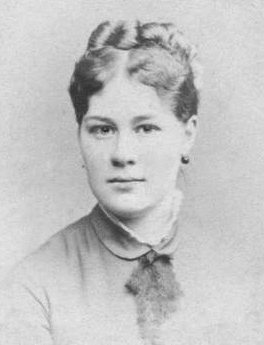
Eliza Cecilia Beaux was an American artist and the first woman to teach art at the Pennsylvania Academy of the Fine Arts. Known for her elegant and sensitive portraits of friends, relatives, and Gilded Age patrons, Beaux painted many famous subjects including First Lady Edith Roosevelt, Admiral Sir David Beatty and Georges Clemenceau.

Mary Elizabeth Price, also known as M. Elizabeth Price, was an American Impressionist painter. She was an early member of the Philadelphia Ten, organizing several of the group's exhibitions. She steadily exhibited her works with the Pennsylvania Academy of the Fine Arts, the National Academy of Design, and other organizations over the course of her career. She was one of the several family members who entered the field of art as artists, dealers, or framemakers.
Cornelia Baxter Barns was an American illustrator, political cartoonist, painter, feminist, and socialist.

Jessie Willcox Smith was an American illustrator during the Golden Age of American illustration. She was considered "one of the greatest pure illustrators". A contributor to books and magazines during the late 19th and early 20th centuries, Smith illustrated stories and articles for clients such as Century, Collier's, Leslie's Weekly, Harper's, McClure's, Scribners, and the Ladies' Home Journal. She had an ongoing relationship with Good Housekeeping, which included a long-running Mother Goose series of illustrations and also the creation of all of the Good Housekeeping covers from December 1917 to 1933. Among the more than 60 books that Smith illustrated were Louisa May Alcott's Little Women and An Old-Fashioned Girl, Henry Wadsworth Longfellow's Evangeline, and Robert Louis Stevenson's A Child's Garden of Verses.
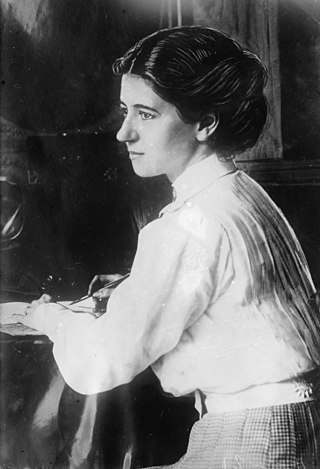
Violet Oakley was an American artist. She was the first American woman to receive a public mural commission. During the first quarter of the 20th century, she was renowned as a pathbreaker in mural decoration, a field that had been exclusively practiced by men. Oakley excelled at murals and stained glass designs that addressed themes from history and literature in Renaissance-revival styles.

Elizabeth Shippen Green was an American illustrator. She illustrated children's books and worked for publications such as The Ladies' Home Journal, The Saturday Evening Post and Harper's Magazine.

Lilly Martin Spencer was one of the most popular and widely reproduced American female genre painters in the mid-nineteenth century. She primarily painted domestic scenes, paintings of women and children in a warm happy atmosphere, although over the course of her career she would also come to paint works of varying style and subject matter, including the portraits of famous individuals such as suffragist Elizabeth Cady Stanton. Although she did have an audience for her work, Spencer had difficulties earning a living as a professional painter and faced financial trouble for much of her adult life.

Mary Louise Curtis was the founder of the Curtis Institute of Music in Philadelphia. She was the only child of the magazine and newspaper magnate Cyrus H. K. Curtis and Louisa Knapp Curtis, the founder and editor of the Ladies' Home Journal.

Elenore Plaisted Abbott (1875–1935) was an American book illustrator, scenic designer, and painter. She illustrated early 20th-century editions of Grimm's Fairy Tales,Robinson Crusoe, and Kidnapped. Several books were published as illustrated by Elenore Plaisted Abbott and Helen Alden Knipe.
Clara Elsene Peck was an American illustrator and painter known for her illustrations of women and children in the early 20th century. Peck received her arts education from the Minneapolis School of Fine Arts and was employed as a magazine illustrator from 1906 to 1940. Peck's body of work encompasses a wide range, from popular women's magazines and children's books, works of fiction, commercial art for products like Ivory soap, and comic books and watercolor painting later in her career. Peck worked during the "Golden Age of American Illustration" (1880s–1930s) contemporaneous with noted female illustrators Jessie Willcox Smith, Elizabeth Shippen Green and Violet Oakley.
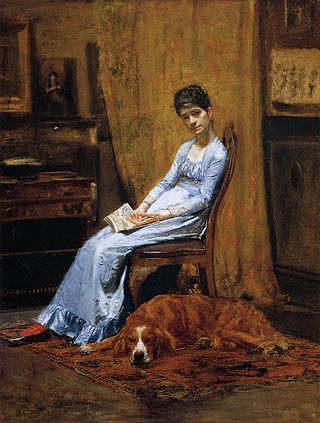
Susan Hannah Eakins was an American painter and photographer. Her works were first shown at the Pennsylvania Academy of the Fine Arts, where she was a student. She won the Mary Smith Prize there in 1879 and the Charles Toppan prize in 1882.
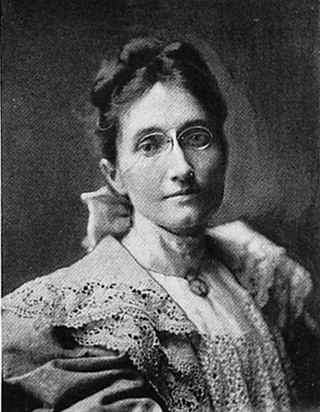
Alice Barber Stephens was an American painter and engraver, best remembered for her illustrations. Her work regularly appeared in magazines such as Scribner's Monthly, Harper's Weekly, and The Ladies Home Journal.

Jennie Augusta Brownscombe was an American painter, designer, etcher, commercial artist, and illustrator. Brownscombe studied art for years in the United States and in Paris. She was a founding member, student and teacher at the Art Students League of New York. She made genre paintings, including revolutionary and colonial American history, most notably The First Thanksgiving held at Pilgrim Hall in Plymouth, Massachusetts. She sold the reproduction rights to more than 100 paintings, and images of her work have appeared on prints, calendars and greeting cards. Her works are in many public collections and museums. In 1899 she was described by New York World as "one of America's best artists."

Allan Randall Freelon Sr., a native of Philadelphia, US, was an African American artist, educator and civil rights activist. He is best known as an African American Impressionist-style painter during the time of the Harlem Renaissance and as the first African American to be appointed art supervisor of the Philadelphia School District.

Ellen "Nelly" Thayer Fisher was an American botanical illustrator. Fisher exhibited her paintings at the National Academy of Design and other exhibitions. She was an active contributor to the exhibitions of the American Watercolor Society, beginning in 1872. In addition to being shown in galleries and exhibitions, her paintings of flora and fauna were widely reproduced as chromolithographs by Boston publisher Louis Prang.
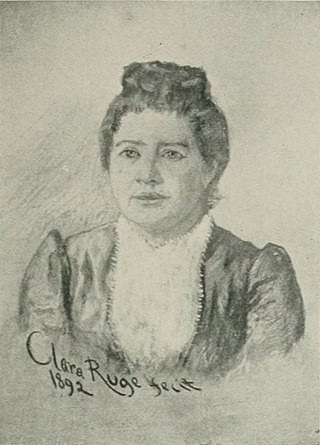
Alice Heighes Donlevy was a British-American artist and writer on art, who specialized in wood engraving and illumination. She served as the art editor of Demorest's Magazine.
The Pyramid Club was formed in November 1937 by African-American professionals for the "cultural, civic and social advancement of Negroes in Philadelphia." By the 1950s, it was "Philadelphia's leading African-American social club."

Harriet Christina Cany Peale was an American landscape, portrait, and genre painter of the mid-nineteenth century. Although sometimes described as a copyist, a greater share of her oeuvre has been made public in recent years, allowing Cany Peale to earn recognition for her genre and landscape paintings. She has been located in contemporary scholarship as an artist of the Hudson River School.

Julie Hart Beers Kempson was an American landscape painter associated with the Hudson River School who was one of the very few commercially successful professional women landscape painters of her day.
Harriet Sartain was an American artist, arts educator and college administrator. She was dean of the Philadelphia School of Design for Women, which became part of the Moore College of Art and Design in 1932.
References
- 1 2 3 4 Prieto, Laura (2001). At Home in the Studio: The Professionalization of Women Artists in America. Boston, MA: Harvard University Press. p. 121.
- 1 2 3 4 Swinth, Kirsten (2001). Painting Professionals: Women Artists and the Development of Modern American Art 1870-1930. Chapel Hill, NC: University of North Caroline Press. p. 117.
- ↑ Prieto, Laura (2001). At Home in the Studio: The Professionalization of Women Artists in America. Boston, MA: Harvard University Press. p. 121.
- 1 2 Masten, April (2008). Art Work: Women Artists and Democracy in Mid-Nineteenth Century New York. Philadelphia, PA: University of Pennsylvania Press. p. 144.
- 1 2 3 4 5 Dudley Elizabeth. "The Ladies' Art Association of New York." The Aldine 8, no. 5 (January 1, 1876): 151. doi:10.2307/20637285.
- ↑ Masten, April (2008). Art Work: Women Artists and Democracy in Mid-Nineteenth Century New York. Philadelphia, PA: University of Pennsylvania Press. p. 144.
- 1 2 Masten, April (2008). Art Work: Women Artists and Democracy in Mid-Nineteenth Century New York. Philadelphia, PA: University of Pennsylvania Press. p. 146.
- 1 2 Masten, April (2008). Art Work: Women Artists and Democracy in Mid-Nineteenth Century New York. Philadelphia, PA: University of Pennsylvania Press. p. 148.
- ↑ Prieto, Laura (2001). At Home in the Studio: The Professionalization of Women Artists in America. Boston, MA: Harvard University Press. p. 122.
- 1 2 Masten, April (2008). Art Work: Women Artists and Democracy in Mid-Nineteenth Century New York. Philadelphia, PA: University of Pennsylvania Press. p. 149.
- ↑ Masten, April (2008). Art Work: Women Artists and Democracy in Mid-Nineteenth Century New York. Philadelphia, PA: University of Pennsylvania Press. p. 147.